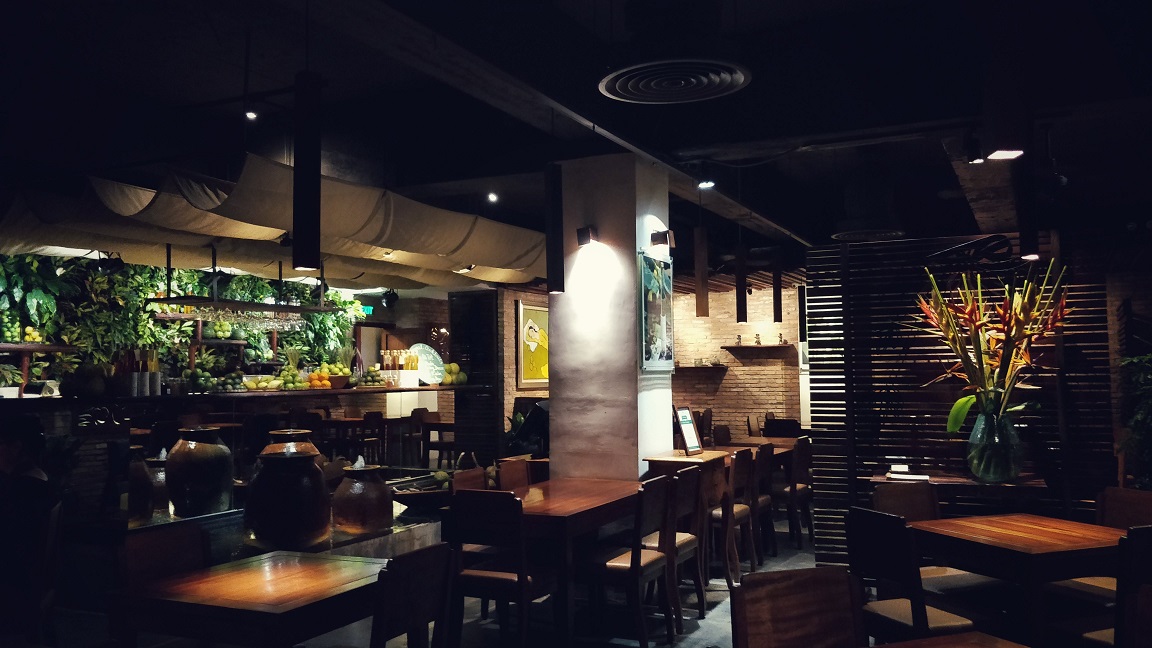Savor Genuine Eastern Cuisine With a Pan-Asian Spin for a Cooking Journey
Beginning on a culinary journey through genuine Eastern cuisine, improved with a Pan-Asian twist, provides an one-of-a-kind opportunity to discover the rich tapestry of tastes that define the region's diverse culinary practices. As you ponder these enticing dishes, consider the social stories and historical influences that shape them, each bite supplying a story waiting to be discovered. Romantic restaurants Islamabad.

Exploring Pan-Asian Flavors
In the realm of international gastronomy, Pan-Asian food stands apart for its impressive diversity and the harmonious interaction of tastes from different Asian cultures. This culinary approach commemorates the distinct ingredients and rich traditions located throughout the continent, creating a tapestry of tastes that is both satisfying and appealing. Key to Pan-Asian food is its capability to stabilize contrasting flavors-- wonderful, salty, spicy, and sour-- while highlighting the quality and quality of each component.
From the umami-rich soy sauce of Japan to the intense chili peppers of Thailand, Pan-Asian cuisine supplies a substantial scheme of tastes. These aspects are frequently incorporated in creative ways, boosting meals with layers of intricacy. For example, making use of aromatic natural herbs such as lemongrass and cilantro, typical in Vietnamese and Thai food, includes a revitalizing brightness to meals, while the unification of coconut milk delivers a creamy, abundant texture.
The emphasis on fresh produce and aromatic flavors ensures that each meal is not only a feast for the palate but also for the senses. Pan-Asian cuisine invites restaurants to get started on a cooking trip, discovering the substantial and varied landscapes of Asian gastronomy with every bite.
Fusion Dishes to Try
While Pan-Asian food is celebrated for its traditional tastes, the modern-day culinary landscape is significantly accepting fusion dishes that mix these classic aspects with influences from various other areas. This innovative technique not only honors the abundant heritage of Asian cookeries however likewise presents novel preference experiences that appeal to modern tastes buds.
An archetype of such a combination recipe is the Korean-Mexican taco, where marinated bulgogi beef is wrapped in a cozy tortilla, topped with kimchi and a hot gochujang-infused salsa. This mix weds the bold, full-flavored flavors of Korea with the lively, fresh elements of Mexican food. Similarly, sushi burritos have actually obtained popularity, joining together the fragile virtuosity of Japanese sushi with the hearty, hand-held convenience of a burrito, commonly featuring combination active ingredients like tempura shrimp and avocado with a drizzle of wasabi mayo.
Another significant dish is Thai curry ramen, which instills the luscious, fragrant flavors of Thai curry into the comforting broth of standard Japanese ramen, producing an unified blend that tantalizes the senses. These combination meals expand past mere novelty; they stand for a culinary dialogue between cultures, motivating expedition and development on the planet of Pan-Asian cuisine.
Necessary Components and Seasonings
To truly appreciate Pan-Asian food, one must comprehend the crucial active ingredients and seasonings that form its foundation. This diverse culinary design attracts from an abundant tapestry of Asian traditions, employing an unified mix of flavors and textures. Key components include soy sauce, fish sauce, and oyster sauce, which pass on a full-flavored umami deepness important to Oriental dishes. Complementary to these are rice vinegar and mirin, offering a delicate acidity and sweetness.
Aromatic components are essential, with ginger, garlic, and lemongrass being ubiquitous across various Pan-Asian dishes. These components give a fragrant base that boosts the complexity of tastes. Seasonings such as star anise, cardamom, and cinnamon introduce warmth and personality, resembling impacts from areas like China he has a good point and India.

Food Preparation Methods and Tips
Understanding the art of Pan-Asian food requires familiarity with its distinctive food preparation strategies, each adding to the vibrant tapestry of flavors this cooking practice is celebrated for. Central to these methods is the stir-fry, a rapid food preparation strategy that preserves the nutritional integrity and vibrant shades of ingredients. Utilizing a wok, the stir-fry method permits for even heat distribution, necessary for attaining the characteristic structure and flavor balance of Pan-Asian dishes.
One more essential blog here strategy is steaming, specifically widespread in Chinese food. This mild method maintains the natural flavors and nutrients of active ingredients, making it suitable for fish and shellfish and veggies. Dumplings, a cherished staple, frequently take advantage of steaming, causing soft, delicious structures.
Barbecuing, additionally important, presents great smoky depths to dishes such as Korean bulgogi or Japanese yakitori (Fine dining experience Islamabad). This strategy frequently involves seasoning active ingredients, permitting flavors to pass through deeply before cooking over an open fire or warmer
Lastly, understanding the art of stabilizing tastes-- wonderful, sour, salty, bitter, and umami-- is critical. Appropriately layering these components can boost a dish from ordinary to phenomenal, using a facility and satisfying cooking experience that embodies the significance of Pan-Asian food.
Dining Experiences Worldwide
Around the world, Pan-Asian food provides an exceptional dining experience, commemorated for its rich tapestry of tastes and dynamic presentations. This cooking phenomenon has gone beyond social limits, recording the hearts and tastes buds of food fanatics worldwide. In multicultural cities like New York, London, and Sydney, Pan-Asian dining establishments act as fusions where cooking customs from Thailand, Japan, China, and beyond merge, providing restaurants with a diverse mix of dishes that highlight the area's diversity.
The worldwide allure of Pan-Asian food lies in its ability to provide both credibility and development. Chefs skillfully marry standard active ingredients such as lemongrass, soy sauce, and miso with contemporary methods, leading to meals that are both acquainted and refreshingly brand-new. This fusion allows restaurants to begin on a culinary journey that appreciates heritage while accepting modernity.
Moreover, dining experiences are elevated through thoughtfully designed atmospheres that show the values of Pan-Asian aesthetic appeals. From minimal Japanese-inspired interiors to vivid Thai-themed rooms, each dining establishment uses a special atmosphere that complements the culinary offerings. As an outcome, clients are not just consuming a dish but partaking in a social experience, making Pan-Asian dining a truly worldwide sensation.
Final Thought
The expedition of Pan-Asian food offers a profound understanding of the intricate interaction of tastes and culinary customs throughout Asia. By welcoming fusion recipes such my review here as Thai curry ramen and sushi burritos, the culinary journey not only highlights the versatility of traditional active ingredients yet additionally showcases innovative contemporary techniques. This gastronomic journey, enriched by essential flavors and cooking approaches, gives an one-of-a-kind chance to appreciate the social variety and culinary creativity that specify Pan-Asian food on a global scale.
Getting started on a cooking journey through authentic Asian food, boosted with a Pan-Asian twist, provides an one-of-a-kind chance to explore the rich tapestry of flavors that define the region's diverse culinary customs.In the world of global gastronomy, Pan-Asian food stands out for its impressive variety and the harmonious interaction of tastes from different Asian cultures. Trick to Pan-Asian cuisine is its ability to stabilize different tastes-- wonderful, salted, spicy, and sour-- while highlighting the freshness and quality of each active ingredient.
